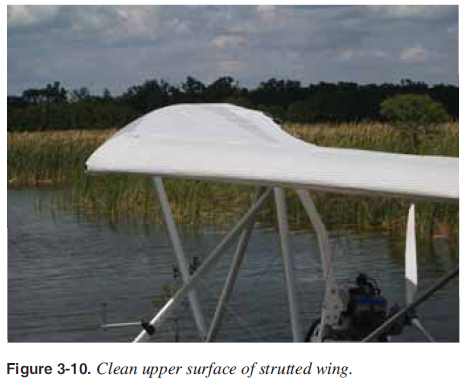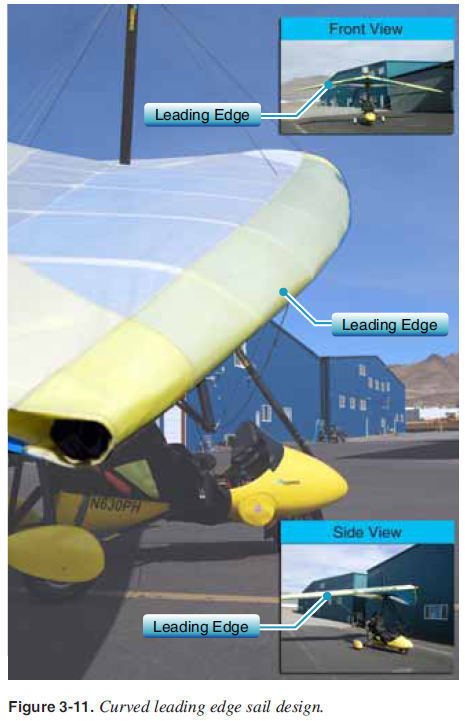
 |
|
||
| CHAPTER 3. Components and Systems
King Post With Wires-on-Top Wing Design Similar to the lower control frame holding the wing in position during fl ight, the king post is attached to the keel and supports the upper ground wires which hold the wing in position on the ground and negative loads during fl ight. [Figure 3-2] It also provides a structure for refl ex lines which is discussed later in wing systems. Topless Wings With Struts Similar to airplanes with struts to support the wings, some WSC aircraft replace side fl ying wires with struts, eliminating the king post and ground wires on top of the wing. This provides a number of benefi ts, but primarily, no king post is needed because the struts can take a compression load and hold the wings up on the ground and also take the negative loads during fl ight. With struts, a WSC aircraft is much shorter in height allowing it to fi t into hangars with lower doors and ceilings. This can make a big difference in fi nding a suitable storage for the aircraft if leaving it set up. [Figure 3-8]  Some strutted designs allow the wings to be folded back while still on the carriage. This can also be helpful when using a smaller space for storage by folding the wing up without taking it off the carriage. [Figure 3-9] It is also convenient for sea trikes since the aircraft does not have to be taken out of the water to fold up the wing.  Strutted wings have a clean upper surface with no holes required for the king post or wires to go through the top of the sail. This reduces interference drag on the top of the wing. Increasing overall effi ciency, no holes in the sail also eliminates any high pressure leakage from underneath the wing getting sucked up to the lower pressure on top of the wing. [Figure 3-10]  Sail Components The sail is a highly refi ned design that integrates with its wing frame. Each sail and wing frame are designed for each other and are not interchangeable with other sails or wings. Modern sails are designed with complex geometry and sewn to precision to achieve a highly effi cient design. Because of the fl exibility of the wing frame and the modern techniques in sail design, the leading edge can have a curved shape which adds to the effi ciency and stability of the wing. [Figure 3-11]  |
| ŠAvStop Online Magazine Contact Us Return To Books |